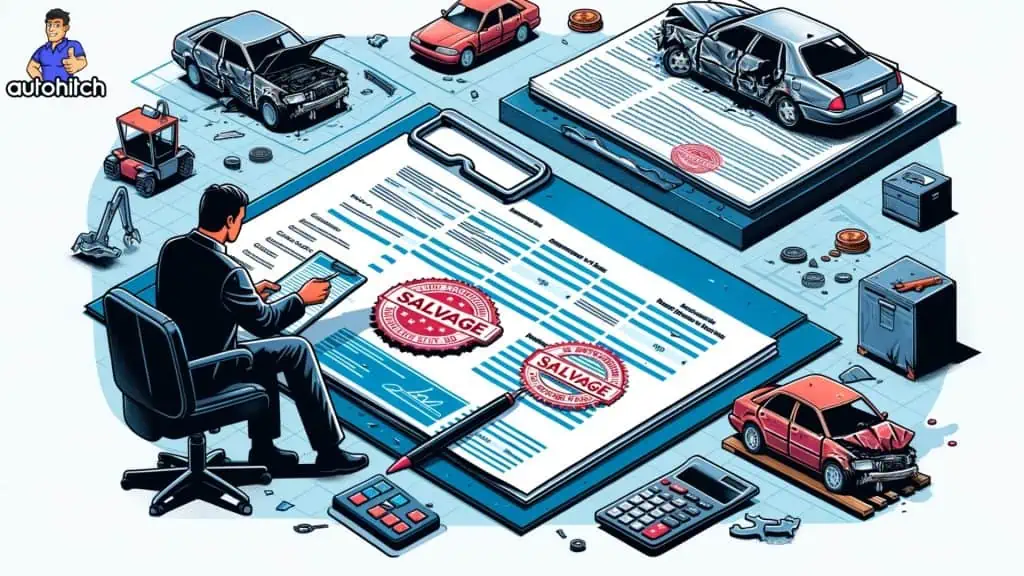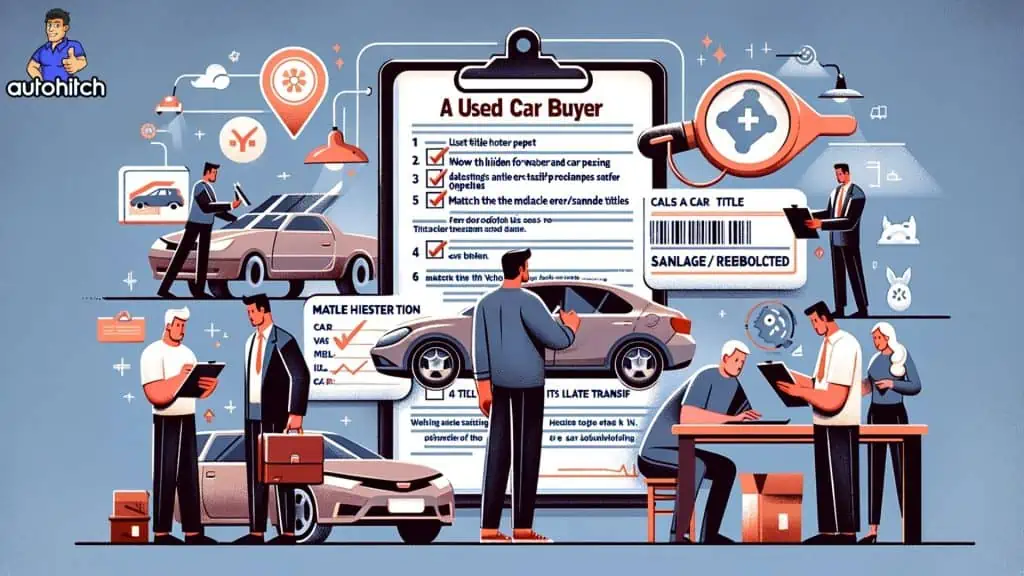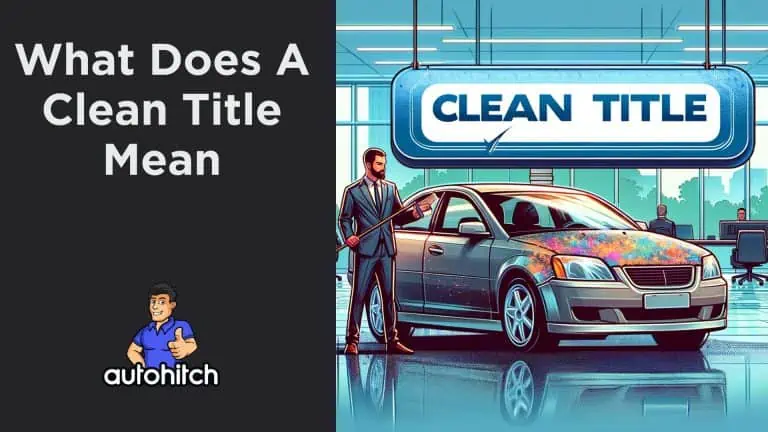If you’re looking to buy a used car you have probably come across the term “Clean Title”, but what does a clean title mean? And is there such a thing as a Dirt Title? Let me briefly explain…
In simple terms, a Clean Title indicates that the car has never been deemed or declared a total loss by an insurance company.
Tip: It does not mean the vehicle has no mechanical or body damage!
As for a dirty title, there really is no such thing, but the opposite of a clean title would be one of several types of titles:
The remainder of my article will get into more specifics of how to identify if a vehicle title is clean and, if it is not, if it’s still okay to buy cars without clean titles.
Related Articles to Read:
- What Is Title Jumping and How to Avoid It?
- Vehicle Title Washing – The Keys To A Clean Title
- Banks That Finance Salvage Titles
- How To Turn a Rebuilt Title to a Clean Title
- Rebuilt Title Insurance Cost
- Salvage And Rebuilt Title Cars | Buyer Beware or Great Deal?
Table of Contents
What is a Clean Title?
A clean title simply means the legal ownership document for a vehicle does not contain any brands or other indicators of past distress. Some specifics on clean titles:
- Never been declared a total loss by an insurance provider after extensive damage.
- Original manufacturer’s title with no indication of rebuild, salvage, theft recovery, flood damage, etc.
- No outstanding liens or loans attached to the title.
- Indicates clear ownership with no disputes over who the legal owner is.
So, in essence, a clean title means the vehicle has a “clean bill of health” when it comes to its history and ownership record. There are no clouds hanging over its past or present that might make purchasing it riskier.
Clean Title Vs Salvage Title

The opposite of a clean title is a salvage title. This is issued when an insurance company deems a vehicle a total loss after an incident. Here’s a closer look at how this works:
- The insurer calculates repair costs and compares them to the car’s actual cash value.
- If repairs exceed a certain percentage of the car’s worth, often 60-80%, it is declared a total loss.
- The title is then branded as “salvage” to indicate its distressed history.
- Percentages to determine total loss vary by state. Some states brand all totaled vehicles salvage.
Salvage title cars, however, are not road worthy or safe because they have yet to be properly repaired. If a salvage title car has been repaired and inspected by the state, it then becomes a rebuilt title which can be legally registered and driven.
Related Article To Read: How to Turn a Salvage Title into a Rebuilt Title
Should you Buy A Car With a Rebuilt Title?

You shouldn’t automatically write off the idea of buying a rebuilt title car, assuming it was totaled by the insurance company for damage that could affect your safety.
For example: Cars damaged in hail storms are often be totaled by Insurance companies, and although the cost of replacing nearly the entire exterior of a vehicle is expensive, this isn’t damage that would affect your safety.
That said, there are pros and cons of buying a car with rebuilt titles.
Pros and Cons of Buying Rebuilt Title Cars
Pros:
- Rebuilt title cars are usually significantly cheaper than similar cars with clean titles, often 20-50% less. This can represent major savings.
- The car has likely undergone repairs and passed a state safety inspection in order to get a rebuilt title. This provides some assurance that the car is roadworthy.
- There is often extensive documentation available on the damage history and repairs done on rebuilt title cars.
Cons:
- Safety could still be a concern if repairs were shoddy or hidden damage remains. There’s no guarantee repairs were done properly. Getting a thorough inspection is critical.
- Rebuilt title cars can be much harder to insure, often only qualifying for basic liability coverage. Premiums are typically higher as well.
- Financing rebuilt title cars can also be very difficult, with many lenders unwilling to finance them.
- Rebuilt title cars have very low resale value compared to clean title cars. Some dealers won’t even accept them as trade-ins.
Tips for buying a car with a rebuilt title
When shopping for a used car, keep the following tips in mind to make the smartest and safest purchase:
- Inspect vehicle thoroughly – Look for signs of damage history even on clean title cars. Test drive performance.
- Get a vehicle history report – Cross reference VIN for title brands, accident history, mileage, etc.
- Review title in person – Check for brands indicating salvage, total loss, etc. that might be hidden or washed.
- Match VINs – Confirm the title VIN matches the vehicle placard and reports to avoid fraud.
- Consider an inspection by a mechanic – They can provide an expert assessment on any issues or previous repairs.
- Evaluate title impact on value – Salvage/rebuilt brands lower value and make financing difficult. Factor into price.
- Check title transfer processes – Learn your state’s paperwork requirements before completing sale.
Tips for Ensuring a Vehicle Has a Clean Title
| Tip | Explanation | Why It’s Important |
|---|---|---|
| Check Vehicle History | Obtain a detailed report of the vehicle’s history via its VIN to check for past accidents or issues. | Avoids purchasing a vehicle with a hidden past that could affect safety and value. |
| Perform a VIN Check | Verify the car’s VIN with state DMV records to ensure it matches the vehicle and its documents. | Ensures there are no discrepancies, potential theft, or title washing. |
| Inspect the Car | Have a professional inspection of the vehicle for any undisclosed damage or repairs. | Detects any problems not reflected in the vehicle history, affecting the title status. |
| Understand Title Brands | Be aware of the different title brands and what they imply about a car’s history. | Helps in making an informed buying decision and assessing the true value and safety of the vehicle. |
| Avoid Title Washing | Be cautious of sellers from states with lax title laws or discrepancies in vehicle paperwork. | Prevents falling victim to title washing, where negative history is illegally removed from a vehicle’s records. |
My Final Advice
Understanding title status is an important part of any used car purchase as it was for me at the dealership.
While clean titles provide assurance of a trouble-free history, branded titles like salvage and rebuilt must be carefully evaluated as well.
Use vehicle history reports, inspections, and other tips covered here as part of your research process. Being informed is key to making a smart, financially sound used car choice no matter what shape the title is in.
Sources and Citations:
- Video: https://www.perplexity.ai/search/442f80fa-8387-48e6-9811-15b131697433?s=u
- https://cartitles.com/what-does-a-clean-title-mean-for-a-used-car/
- https://www.checkcity.com/loans-101/why-a-clean-car-title-matters
- https://www.yourmechanic.com/article/what-is-the-difference-between-a-clean-title-and-a-salvage-title



